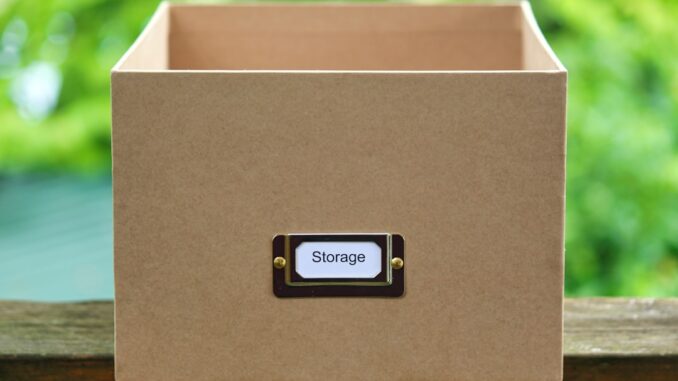
Summary
Investing wisely in data storage solutions is crucial for businesses. This article provides best practices for assessing needs, choosing solutions, and ensuring data security, scalability, and cost-effectiveness. Follow these steps for a robust and future-proof data storage strategy.
Award-winning storage solutions that deliver enterprise performance at a fraction of the cost.
** Main Story**
Investing in robust data storage solutions is crucial in today’s data-driven world. This article guides you through selecting and managing the ideal data storage solution for your business needs. We’ll explore assessing your current and future needs, various storage options, and best practices for secure and efficient data management. By following these actionable steps, you can build a data storage strategy that’s both robust and adaptable for the future.
Assessing Your Needs
Begin by thoroughly understanding your organization’s current data storage requirements. Analyze factors like data growth rates, the types of data you handle, and performance demands to gauge your immediate needs. Don’t stop at the present; anticipate your future data storage needs too. Ensure the solution you choose can scale to accommodate this growth, avoiding costly and disruptive upgrades down the line.
Choosing the Right Solution
Explore different storage options to find the best fit. Cloud storage solutions, such as those offered by Amazon Web Services, Google Cloud, and Microsoft Azure, offer scalability on demand, allowing you to adjust resources as your data needs evolve. On-premises storage, like Network Attached Storage (NAS) or Storage Area Network (SAN), provides greater control and security but often comes with higher upfront costs. Hybrid solutions combine the benefits of both, offering flexibility and scalability alongside enhanced security and control. Consider factors such as cost-effectiveness, performance requirements, integration capabilities, and vendor support when making your decision.
Ensuring Data Security
Prioritize data security when selecting a data storage solution. Implement robust security measures, including encryption at rest and in transit, access controls, and regular security audits. Choose solutions that offer advanced security features to protect your valuable data from unauthorized access and potential breaches. Multi-factor authentication adds an extra layer of security, while regular audits help identify and address vulnerabilities.
Planning for Scalability
As your business grows, so will your data. Opt for scalable storage solutions that can handle increasing volumes of data without compromising performance. Cloud storage offers excellent scalability, allowing you to easily adjust your resources as needed. If you choose on-premises storage, ensure it can expand to meet future demands. Consider data tiering, which allocates different types of data to appropriate storage tiers based on usage patterns, optimizing cost and performance.
Maintaining Cost Efficiency
Evaluate both short-term and long-term costs when choosing a storage solution. Cloud storage may offer lower upfront costs, but ongoing subscription fees can accumulate over time. On-premises solutions require initial investment in hardware and maintenance, but can be more cost-effective in the long run for large data storage needs. Factor in potential scalability costs, maintenance fees, and support services when making your decision.
Ensuring Reliability and Disaster Recovery
Choose data storage solutions that prioritize high availability, redundancy, and a low failure rate. Distributed file systems and cloud storage providers often have built-in redundancy to minimize downtime. Develop a robust disaster recovery plan to quickly restore data in case of system failures or unforeseen events. Regularly back up your data, both on-site and off-site, and test your restoration process to ensure its effectiveness.
Implementing Best Practices
Adhere to data management best practices to optimize your storage solution. Establish clear data retention and deletion policies to keep critical data accessible while removing outdated or redundant files. Classify data based on its importance and sensitivity to apply appropriate security measures. Implement version control to track changes and maintain data integrity.
Investing Wisely
By carefully assessing your needs, choosing the right solution, and following best practices, you can create a data storage strategy that supports your business goals now and in the future. Don’t view data storage as a mere expense, but as a strategic investment that protects your valuable information and enables data-driven decision-making.


Data tiering sounds fancy! Does that mean I can finally justify having a ‘junk drawer’ for my digital files and label it “archival storage”?
That’s a fun way to think about it! Data tiering can certainly help organize things, but ideally, ‘archival storage’ is more about infrequently accessed but still important data, not just the junk drawer. Think strategic organization, not just hiding things! What kind of data are you hoping to archive?
Editor: StorageTech.News
Thank you to our Sponsor Esdebe
“Future-proof”? So, if I invest in this *now*, it’ll still be relevant when my self-aware AI overlords need somewhere to store their cat videos? Asking for a friend… from the future.
Haha, love the AI overlord scenario! While we can’t *guarantee* compatibility with future AI tastes, a well-planned data strategy with scalability and adaptability in mind gives you the best shot at handling whatever the future throws at you—cat videos or otherwise! Data formats might be the real hurdle, have you considered data migration strategies?
Editor: StorageTech.News
Thank you to our Sponsor Esdebe
Regarding disaster recovery, what strategies do you recommend for businesses with geographically diverse operations, considering both latency and regulatory compliance?
That’s a great point! For geographically diverse operations, a multi-cloud strategy with data replication across regions is key for disaster recovery. It addresses latency by keeping data closer to users and helps navigate regulatory compliance by ensuring data residency within specific jurisdictions. Regular testing and failover drills are crucial too! What compliance hurdles have you faced?
Editor: StorageTech.News
Thank you to our Sponsor Esdebe
“Robust and adaptable for the future” eh? Does this mean my meticulously curated collection of early 2000s MP3s will finally be recognized as the cultural gold they truly are? Asking for a friend still rocking a Zune.